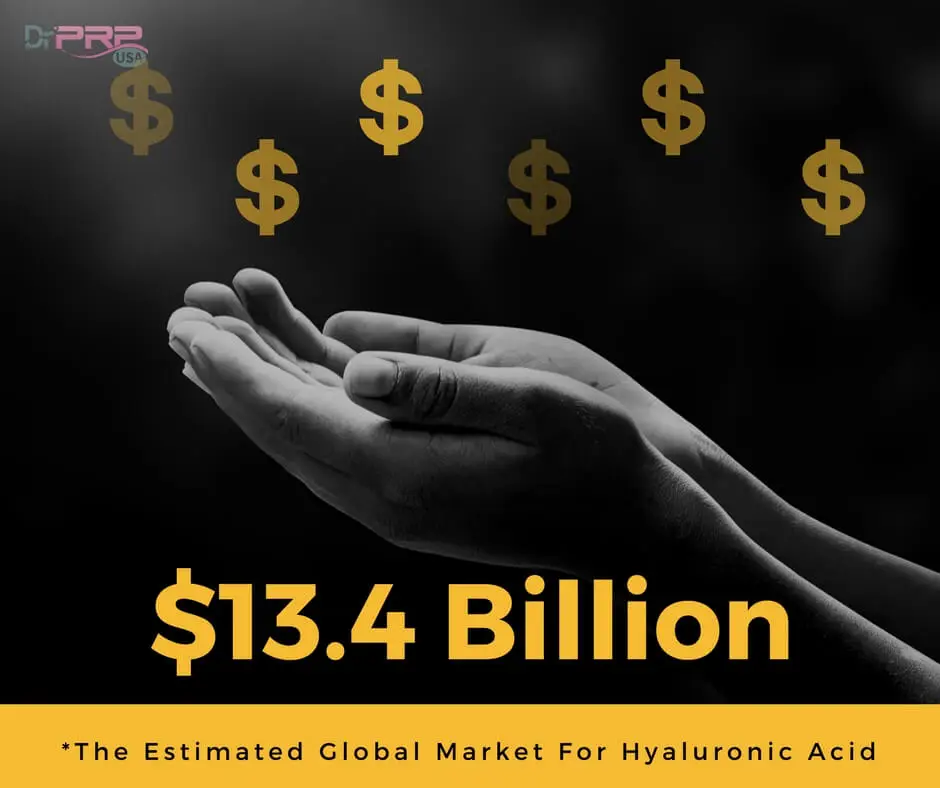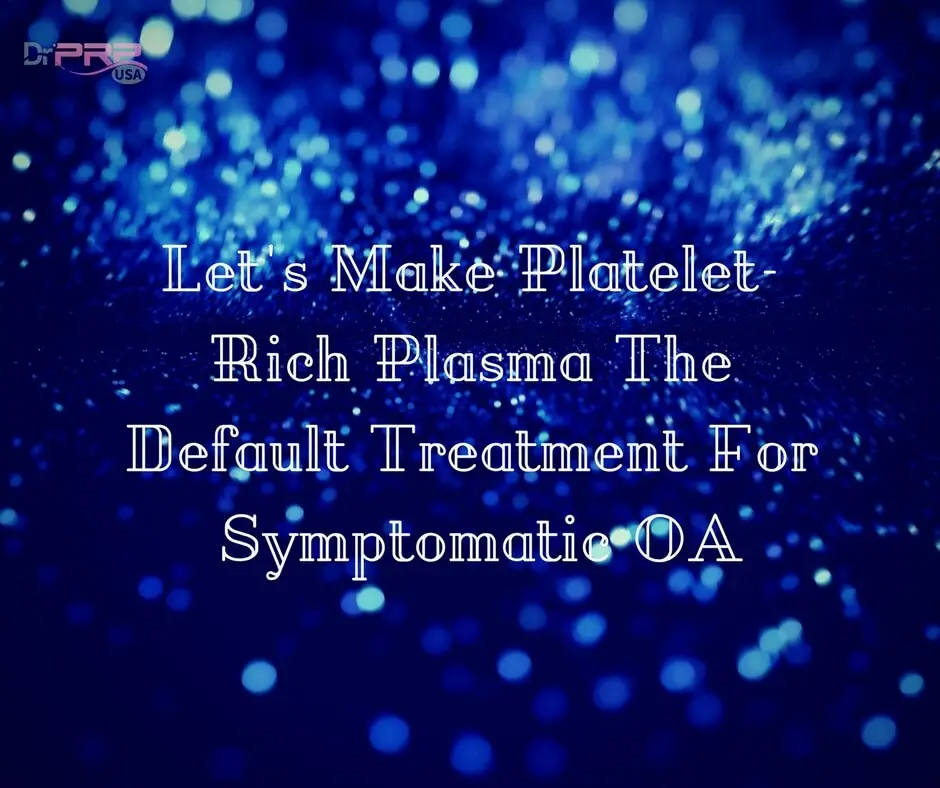| Item | Price | Qty | Total | |
|---|---|---|---|---|
 Loading Cart...
Loading Cart...Did Platelet-Rich Plasma Just Crush $13 Billion Hyaluronic Acid?

While it didn’t take us by surprise when we saw Platelet-Rich Plasma win yet another bout with Hyaluronic Acid, the scientific community is pretty much over-the-top with this latest result. This is the first time there is really hard, convince-any-hard-core-critics evidence that Platelet-Rich Plasma indeed might be the new accepted non-surgical treatment for symptomatic OA.
This new study was headed by Brian Cole of Rush University Medical Center.
For those who don’t know what that means, here’s a brief summary.
- Rush University Medical Center is ranked #4 in the nation by U.S. News & World Report and the highest rated in Illinois.
- Dr. Brian Cole is the associate chairman and professor of Department of Orthopedics and chairman of Department of Surgery at Rush.
- He is also the Chairman of Surgery at Rush Oak Park Hospital.
- He has published more than 1,000 articles and 10 popular textbooks in orthopedics and regenerative medicine.
- He is known as one of the “Best Doctors in America” and was NBA Team Physician of the Year in 2009.
- He is also the head team physician for the Chicago Bulls NBA team and co-team physician for the Chicago White Sox MLB team.
- Dr. Cole also co-hosts Sports Medicine Weekly on ESPN Radio.
As you can see, this is kinda huge.
That’s why we’re celebrating it.
You can read information about Dr. Brain Cole’s study here.
How This Study Was Conducted
This study was performed on 111 symptomatic unilateral knee OA patients over a period of one year. Forty-nine patients were injected with Platelet-Rich Plasma and fifty patients were injected with Hyaluronic Acid, both under ultrasonic guidance. This was repeated 4 times. Both groups did not have any change in WOMAC score but IKDC score in the PRP group was significantly higher.
And as the paper reports, “significant improvements were seen in other patient-reported outcome measures” which they suspect was due to the anti-inflammatory properties of Platelet-Rich Plasma.
Why Was Hyaluronic Acid Injected In The Past
To fully understand the scope of this new study outcome, let’s discuss the role of Hyaluronic Acid in treating Osteoarthritis. As you know, Hyaluronic Acid is a critical substance in the synovial fluid that allows the bones to glide against one another. And lack of Hyaluronic Acid leads to breakdown of synovial fluid causing joint pain and stiffness that’s associated with Osteoarthritis.
So theory is that injecting Hyaluronic Acid into synovial fluid makes it thicker again.
However, what decades of study has shown is that it’s not as simple as that. Hyaluronic acid has a lot of other activities in the joint and the supplemental, bioengineered HA Hyaluronic Acid does not seem to pick those activities up naturally. That’s why doesn’t actually help improve the synovial fluids.

A $13 Billion Dollar Industry To Be Taken Over By Platelet-Rich Plasma?
Reports by industry analysts pegs the worldwide Hyaluronic Acid market (majority) to over $13 Billion. The market is divided into four sections according the application of HA 1) dermal fillers 2) osteoarthritis 3) ophthalmic and 4) vesicoureteral reflux. In THREE of these FOUR divisions, Platelet-Rich Plasma is already proven as a worthy substitute.
Let’s take a look:
- With the help of this instrument, Platelet-Rich Plasma produces dermal fillers that can match Hyaluronic Acid fillers.
- Osteoarthritis, as per our discussion here, stands to gain more with Platelet-Rich Plasma than Hyaluronic Acid.
- For dry-eyes, Platelet Rich Plasma seems to be effective when other treatments are not. (Around 40 million people suffer from dry eyes in the U.S.)
- Only for vesicoureteral reflux, that Platelet-Rich Plasma has not been proved. But PRP has been found effective for urinary incontinence, so I suspect it’s a matter of time we’ll see the evidence emerging to support PRP for this.
I’m not saying Platelet-Rich Plasma will immediately capture the Hyaluronic Acid market.
At least now now.
But there is hope that we could see the market replace a huge portion of bioengineered Hyaluronic Acid with Platelet-Rich Plasma. Think about it. Instead of spending unnecessary money on HA, your patients can now choose a wholesome treatment that actually gives amazing “side effects” to their body.
What It Means For OsteoArthritis Patients
If you’re a doctor, what this means is that you can stop using hyaluronic acid injections altogether, and instead confidently suggest Platelet-Rich Plasma for your patients. Even if insurance does not cover Platelet-Rich Plasma injections (read more about insurance coverage for prp injections), it is a far more optimum treatment than the bioengineered Hyaluronic Acid.
I believe it’s only a matter of time that the insurance companies will realize why it’s actually cheaper and more effective to do Platelet-Rich Plasma than Hyaluronic Acid.



